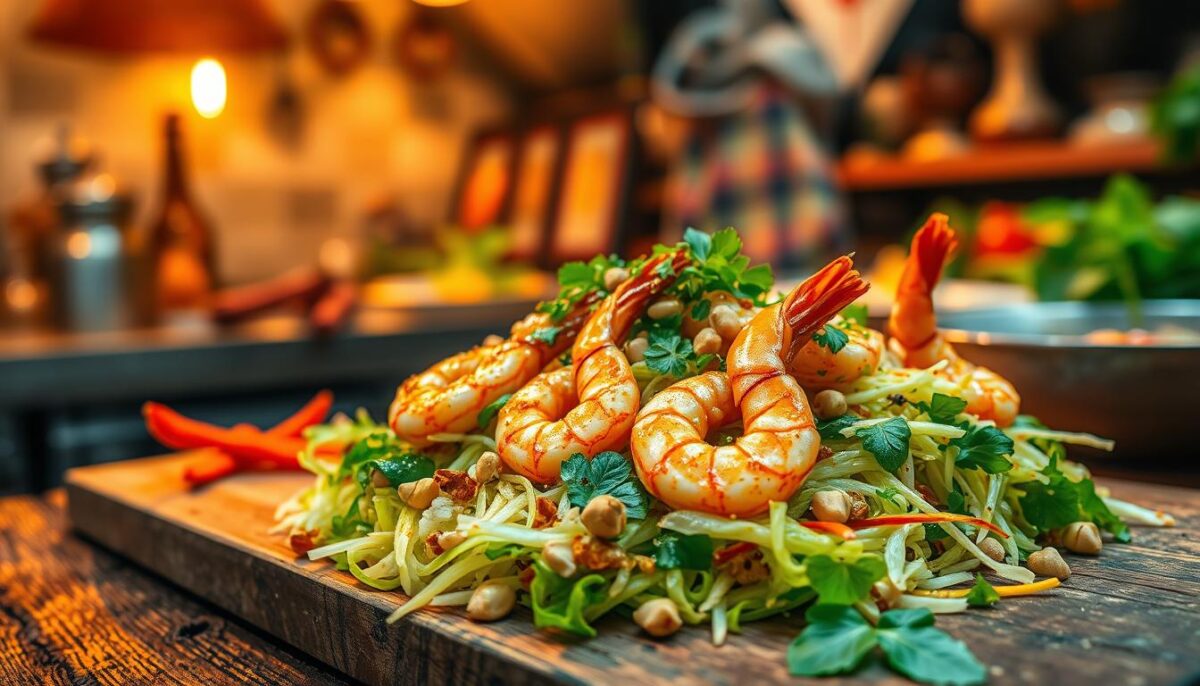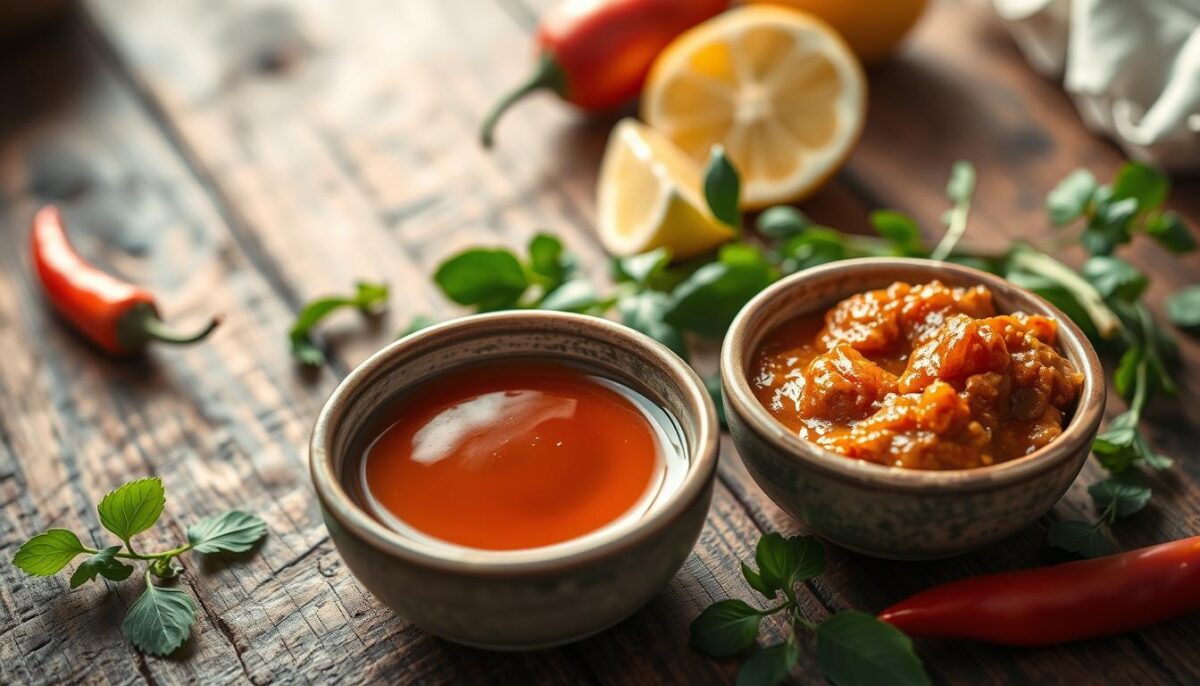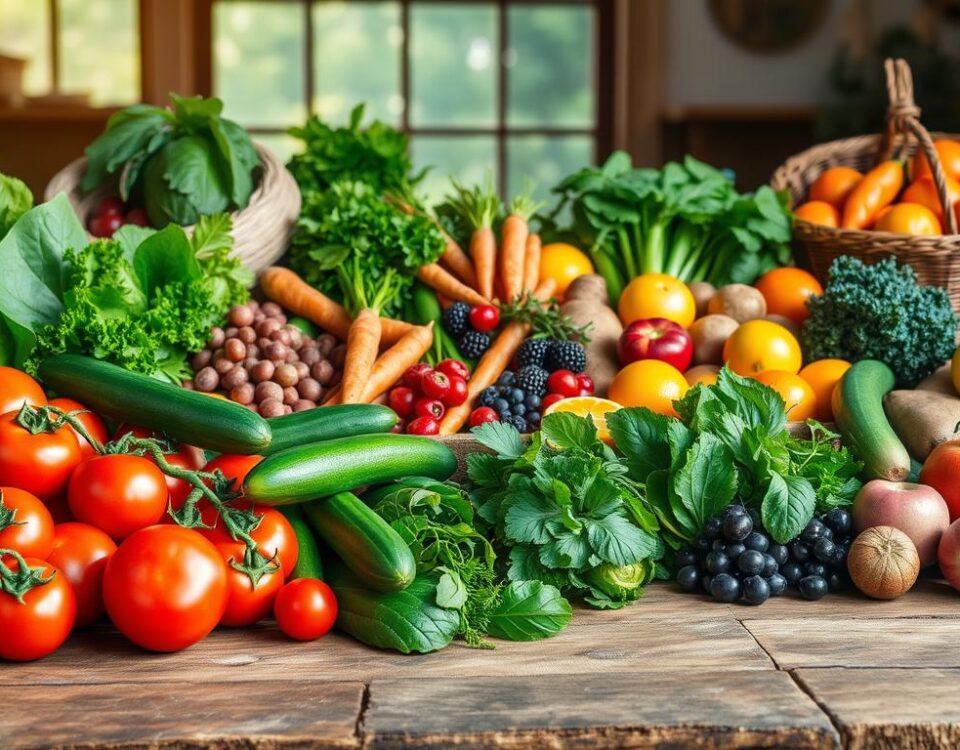
How to Recreate a Traditional Korean BBQ Night at Home
April 28, 2025
Exploring Moroccan Flavors: Tagines, Spices, and Sweet Treats
April 28, 2025I’ll never forget the first time I tasted real pad thai. It wasn’t at a restaurant, but at a bustling night market in Bangkok, where the sizzle of woks harmonized with laughter. The vendor handed me a plate wrapped in banana leaves, and with one bite, I understood: this wasn’t just food—it was a story on a plate.
That moment sparked my obsession with exploring how simple ingredients like jasmine rice or fiery chilies could create such bold, unforgettable flavors. Over years of travels and kitchen experiments, I’ve discovered seven creations that truly capture Thailand’s soul. These aren’t just meals—they’re edible postcards from every region.
From the creamy comfort of coconut-based curries to the zing of lime-kissed salads, each recipe tells part of a bigger tale. You’ll find smoky grilled chicken rubbed with turmeric beside delicate desserts that taste like sunshine. What ties them together? A love for fresh herbs, contrasting textures, and that magical balance of sweet, salty, sour, and spicy.
Key Takeaways
- Seven iconic meals showcase Thailand’s diverse culinary regions
- Fresh ingredients like lemongrass and kaffir lime define authentic flavors
- Street food traditions influence even restaurant-quality dishes
- Balance is key—every bite harmonizes multiple taste sensations
- Vegetarian adaptations exist for most meat-based classics
- Chili heat levels can often be customized to personal preference
Whether you’re craving comfort food or culinary adventure, this curated guide—born from smoky street stalls and family kitchens—will transport your taste buds. Let’s dive into the dishes that make Thailand’s food scene truly irresistible.
Introduction to Thai Culinary Adventures
It all started with a street vendor’s curry that changed my perspective on food forever. Behind a cloud of wok smoke in Chiang Mai, I discovered how spices like galangal and turmeric could transform coconut milk into liquid gold. That first fiery spoonful taught me Thai cuisine isn’t eaten—it’s experienced.
What makes Thai food unforgettable? The symphony of four core flavors in every bite. I learned this balancing act from a market cook who chuckled as I gasped from chili heat. “Sweet cools the fire,” she said, handing me mango sticky rice. Her wisdom shaped how I now approach each meal:
| Taste Element | Role | Common Ingredients | My Experience |
|---|---|---|---|
| Sweet | Mellows heat | Palm sugar, coconut | Saved me from chili overload |
| Sour | Adds brightness | Lime, tamarind | Makes salads “pop” |
| Salty | Enhances depth | Fish sauce, shrimp paste | Umami game-changer |
| Spicy | Creates excitement | Bird’s eye chili | Adventure in every bite |
I’ve slurped noodles at 3 AM from folding tables and sampled grilled meats skewered on bamboo. These unassuming spots taught me more about authentic Thai cuisine than any fancy restaurant. The real magic happens where mortar-pounded herbs meet sizzling pans—and where curious eaters like us pull up plastic stools.
Through trial and (delicious) error, I’ve mapped out a flavor journey anyone can take. Let’s explore how street-smart techniques and market-fresh ingredients create dishes that dance on your tongue.
The Story Behind My Thai Food Journey
My culinary awakening began at dawn in a Bangkok alleyway. A vendor handed me steaming joke – rice porridge topped with silky fried eggs and minced garlic-marinated chicken. The first spoonful exploded with flavors I couldn’t name yet, but knew I needed to chase.
That week, I ate my way through night markets where skewered meat sizzled over charcoal. One cook laughed as I pointed blindly at ingredients – “Gai yang!” she declared, serving smoky grilled chicken rubbed with garlic and turmeric. Each bite taught me how humble elements create magic.
Three flavor revelations shaped my journey:
| Ingredient | Role | My “Aha!” Moment |
|---|---|---|
| Garlic | Flavor foundation | Watched vendors crush cloves for marinades |
| Eggs | Texture transformer | Crispy-edged fried egg on khao soi |
| Rice noodles | Comfort carrier | Slurped pad see ew at 2 AM |
I learned to spot masters by their wok technique – the way they tossed rice noodles with eggs and soy sauce like culinary conductors. Through trial and delicious error, I discovered how chili-lime dressings could make even simple meat salads sing. These streets became my flavor classroom, one sticky rice basket at a time.
Discover the Thai essential dish list
Cracking open a coconut at a Chiang Mai cooking class revealed more than just milk—it showed me how foundational elements create culinary icons. A dish becomes indispensable when it balances tradition with boldness, much like the mortar-and-pestle rhythm of a market vendor preparing curry paste.
What Makes a Dish Essential in Thai Cuisine?
Three elements separate memorable meals from forgettable ones:
| Element | Cultural Role | Flavor Impact |
|---|---|---|
| Curry Foundations | Regional identity markers | Layers spice and creaminess |
| Fish Sauce | Ancient preservation method | Adds umami depth |
| Lime & Chili | Symbol of balance | Creates bright heat |
| Soy Sauce | Chinese influence legacy | Enhances savory notes |
My Top Personal Recommendations
These creations changed how I understand flavor alchemy:
- Massaman Curry – A creamy hug with cardamom whispers, best when the cinnamon undertones dance with toasted coconut
- Yum Woon Sen – Glass noodles tangled with lime-kissed shrimp, where chili heat meets fish sauce funk
My Chiang Mai guide once said, “Good sauce makes strangers into family.” That truth shines in dishes where soy sauce marinades tenderize grilled meats, and lime juice cuts through rich curries. These aren’t just recipes—they’re edible invitations to explore.
Exploring Iconic Thai Rice Dishes
The rhythmic clang of a metal spatula against a scorching wok announced my first lesson in rice mastery. A street vendor in Chiang Mai tossed jasmine grains like confetti, transforming simple steamed rice into golden garlic fried perfection. “Rice isn’t just food here,” she grinned, “it’s our edible history.”

From Morning Congee to Chicken Rice Gold
Three dishes reveal rice’s chameleon-like magic:
| Creation | Key Ingredients | Texture | My Memory |
|---|---|---|---|
| Khao Tom | Broth, ginger, pork | Silky comfort | Dawn breakfast after night train |
| Khao Man Gai | Poached chicken, sauce | Buttery smooth | Lunch with Bangkok taxi drivers |
| Sticky Rice + Mango | Coconut milk, palm sugar | Chewy-sweet duo | Monsoon season dessert rescue |
I learned sticky rice’s secret during a Isaan village homestay. Grandmothers taught me to steam it in bamboo baskets, creating chewy pearls perfect for dipping in chili jam or wrapping around grilled bananas. Their hands moved like metronomes, shaping rice into edible art.
Rice noodles surprised me most. Flat ribbons in pad see ew soak up smoky soy sauce, while thin strands in khanom chin cradle spicy curries. Each bite proves how one grain morphs into endless textures – crispy edges, springy coils, or melt-in-your-mouth tenderness.
That Chiang Mai vendor was right. Every steamer basket tells stories – of farmers knee-deep in paddies, night markets perfumed with garlic, and shared meals where hands replace forks. Rice isn’t just sustenance here; it’s the edible glue binding communities.
Savoring Signature Thai Curries
The first time I stirred a bubbling pot of green curry, the aroma of kaffir lime leaves hit me like a tropical storm. This wasn’t just cooking—it was alchemy. Local chefs taught me curries act as flavor passports, each color representing different landscapes and traditions.
Color-Coded Flavor Maps
Three iconic varieties form the curry trinity:
| Type | Heat Level | Key Ingredients | Best Paired With |
|---|---|---|---|
| Green | Volcano | Fresh chilies, basil | Chicken, eggplant |
| Red | Campfire | Dried chilies, garlic | Beef, bamboo shoots |
| Yellow | Sunshine | Turmeric, cumin | Potatoes, seafood |
Yellow curry became my comfort favorite—its golden hue comes from turmeric roots pounded with lemongrass. “Northern curries whisper where others shout,” a Chiang Rai chef once told me while simmering coconut milk with roasted peanuts.
Northern Secret Sauces
Beyond the classics lies a world of regional magic. In Mae Hong Son, I tasted a jungle curry without coconut milk—just herbal broth and mae krua mushrooms. The kicker? A thumbprint of shrimp paste stirred in before serving.
“Good curry needs three voices: spice singing, herbs harmonizing, and coconut milk softening the chorus.”
My pro tip: Bloom curry paste in oil first. This unlocks flavors better than mixing it straight into liquid. For vegetarian versions, swap fish sauce with soy and add a squeeze of lime to mimic that umami punch.
Delighting in Thai Noodle Creations
The sizzle of rice noodles hitting a blistering wok still makes my mouth water. I learned their magic watching a street vendor in Phuket—her hands flew like a drummer’s, tossing pad thai with tamarind sauce and crushed peanuts. That dance created more than food; it wove textures and tastes into edible poetry.
Pad Thai and Beyond
What makes these strands so irresistible? It starts with chew. Flat rice noodles soak up sauces while keeping springy bounce. Thin vermicelli becomes a canvas for herbs and lime. I’ve tasted versions where soy sauce-caramelized edges contrast with soft centers—a texture rollercoaster.
Three regional stars redefine expectations:
| Dish | Twist | Texture | My Pick |
|---|---|---|---|
| Drunken Noodles | Basil blast | Chewy-slick | Extra chili smoke |
| Khanom Chin | Curry bath | Silky-slurp | Morning market style |
| Rad Na | Gravy blanket | Crispy-tender | Downpour of pepper |
Pad Thai’s beauty lies in customization. A Chiang Mai cook taught me his secret: “Taste as you stir—sweet needs sour’s backup.” I now add palm sugar gradually, balancing fish sauce funk with lime’s zing.
Beyond street carts, creative spins emerge. I’ve devoured crispy noodle nests topped with crab, and cold glass versions tangled with mint. Each bite proves Thailand’s mastery of transforming humble strands into crave-worthy experiences. The real magic? No two vendors make them exactly alike—and that’s how it should be.
Inviting Thai Soup Selections for Every Palate
A cloud of lemongrass steam rising from a clay pot stopped me mid-stride in Ayutthaya. Inside bubbled a crimson broth that smelled like a tropical thunderstorm—piercing lime, fiery chilies, and something mysteriously briny. This was my introduction to Thailand’s liquid masterpieces, where every spoonful tells a story.
Spicy Tom Yum and Creamy Tom Kha Gai
Let’s start with the rockstars. Tom yum hits your tongue like a flavor grenade—tart lime leaves, punchy galangal, and bird’s eye chilies create its signature zing. I learned its magic formula from a riverside cook: “Squeeze the lime last, or bitterness creeps in.” Her version balanced kaffir lime’s citrus snap with plump shrimp swimming in clear broth.
Then there’s tom kha gai, coconut milk’s velvet embrace. At a Chiang Rai night market, I watched a vendor swirl coconut milk into lemongrass-infused stock, creating silky waves that cradled tender chicken. The secret? Toasting the galangal first for earthy depth.
| Soup | Heat Source | Creaminess | My Must-Try Tip |
|---|---|---|---|
| Tom Yum | Fresh chilies | Clear broth | Add straw mushrooms for texture |
| Tom Kha Gai | Chili paste | Coconut milk | Use fresh, not canned, coconut |
Don’t overlook the tiny powerhouses floating in these broths. Dried shrimp add salty crunch to tom yum, while fried garlic chips crown tom kha gai with golden confetti. At a Bangkok food court, I discovered how these umami bombs transform simple soups into complex experiences.
Pro tip from a street cart regular: “Sip slowly—the first taste burns, the second soothes.” Whether you crave fiery clarity or creamy comfort, these soups prove broth isn’t just a starter. It’s the main event.
Experiencing Vibrant Street Food Culture
Charcoal smoke curled around my ankles as I navigated the maze of sizzling grills. This wasn’t just eating—it was culinary theater. Vendors called out like auctioneers, their hands flipping skewered fish crusted with chili-lime marinades. The air hummed with chopping rhythms and laughter that bounced between plastic stools.
I still dream about the grilled mackerel from a Pattaya cart. Its crispy skin hid flesh perfumed with lemongrass and garlic, served with fiery dipping sauce that made my nose run. Nearby, a wok-tossing artist created street food magic—tossing clams with basil until their shells popped open like tiny fireworks.
Three midnight snacks define the experience:
| Bite | Flavor Punch | Must-Try Tip |
|---|---|---|
| Grilled Squid | Sweet chili glaze | Ask for extra lime wedge |
| Fish Cakes | Curry paste kick | Dip in cucumber relish |
| Garlic Pork | Crispy caramelized edges | Pair with sticky rice |
I learned to follow my nose. One whiff of spices roasting over coals led me to turmeric-rubbed chicken wings. Another night, the scent of garlic butter led to prawns sizzling in cast-iron pans. Each stall offered edible discoveries—fried bananas drizzled with condensed milk, or papaya salads that bit back with chili heat.
Don’t fear the plastic bag drinks. That fluorescent green liquid? Sweet pandan juice. The murky brown one? Herbal iced tea. Wash it all down with both, then chase the night to the next glowing cart. Street food isn’t just meals here—it’s how communities share joy, one fiery fish skewer at a time.
Celebrating the Use of Fresh Herbs and Spices in Thai Cooking
The fragrance of crushed kaffir lime leaves stopped me mid-step at a Bangkok market stall. My fingers still remember the sticky residue from peeling galangal roots during a cooking class—nature’s perfume clinging to my skin for hours. These vibrant ingredients don’t just flavor meals; they create edible symphonies.
Basil and cilantro work like culinary magic wands. I watched a vendor toss handfuls into sizzling pans, their peppery notes cutting through rich curries. “Herbs breathe life into food,” she explained, crushing lemongrass stalks with a mortar.
| Ingredient | Role | My Favorite Pairing |
|---|---|---|
| Holy Basil | Adds peppery heat | Stir-fried chicken |
| Galangal | Earthiness | Tom kha soup |
| Cumin | Warm undertones | Massaman curry |
Citrus transforms every bite. A squeeze of lime over grilled fish creates electric contrast—like sunshine breaking through storm clouds. I learned this balance from a street cart chef who garnished coconut-based soups with lime wedges. “Sour wakes up sleepy flavors,” he winked.
Coconut plays double duty. Its milk softens chili fire in curries, while shredded flesh adds texture to desserts. At a seaside shack, I tasted green papaya salad where toasted coconut flakes danced with lime juice—proof that textures matter as much as tastes.
These elements taught me that great cooking isn’t about complexity. It’s letting herbs sing lead vocals while spices hum backup. Every meal becomes a celebration when nature’s pantry takes center stage.
Satisfying My Cravings: Personal Thai Favorites
The crunch of green papaya between my teeth still echoes from my first roadside lunch in Sisaket. That moment taught me how simple creations become culinary anchors—meals I now chase across continents. Below are the flavors that tattooed themselves on my taste memory.

Highlights of My Most Memorable Dishes
Three creations live rent-free in my food psyche:
| Creation | Flavor Punch | Memory Trigger |
|---|---|---|
| Khao Man Gai | Ginger-garlic sauce | Shared with monks at dawn market |
| Som Tum | Lime-chili symphony | Made in mortar from bicycle cart |
| Goong Ob | Caramelized shrimp | Beachside clay pot revelation |
That khao man gai vendor changed how I see chicken. Her poached birds bathed in pandan broth achieved silkiness I’ve never replicated. The accompanying sauce—ginger, soy, and chilies—made me lick the plastic container.
Papaya salad became my heat thermometer. A street chef once adjusted chili counts as sweat beaded on my forehead. “More makes you alive!” she laughed, adding dried shrimp for umami depth. Now I crave that crunchy contrast—sweet, salty, and fiery in one bite.
Shrimp dishes surprised me most. Clay pot creations where goong ob caramelizes with pepper? Yes. Grilled river prawns with lime dipping sauce? Always. Their sweetness balances chili fire like nature’s perfect antidote.
These dishes map my journey through night markets and family kitchens. What flavors tattoo themselves on your palate? I’d trade recipes to hear your stories.
Embracing Variety: Thai Salads and Snacks Explored
Have you ever tasted a salad that bites back? My first encounter with papaya salad happened at a roadside cart where the vendor’s mortar-pounding rhythm drew me like a drumbeat. Crunchy green shreds mingled with chili-lime fireworks—a flavor slap that left me grinning through watery eyes.
These creations turn vegetables into flavor bombs. A squeeze of lime cuts through garlic’s sharpness, while palm sugar tames chili heat. I’ve watched cooks balance these elements like tightrope walkers—one extra chili flake can tip the scales from zesty to volcanic.
Three salads redefine freshness:
| Salad | Secret Weapon | Flavor Twist |
|---|---|---|
| Yum Woon Sen | Glass noodles | Fish sauce tang |
| Som Tum | Green papaya | Dried shrimp crunch |
| Larb Moo | Toasted rice | Mint freshness |
Snacks surprise most. In Chiang Mai, I devoured crispy garlic-rubbed pork bites from a bicycle cart—caramelized edges glistening with sugar glaze. Nearby, banana blossom fritters offered floral crunch dipped in tamarind sauce.
Want to experiment? Start with lime juice, chili, and fish sauce—the holy trinity. Adjust sugar to soften blows, or add roasted peanuts for texture. My home version of papaya salad uses green apples when unripe papaya’s scarce. The result? Less authentic, equally addictive.
Indulging in Authentic Thai Desserts and Sweets
The first time my fingers stuck to banana leaves wrapped around warm coconut custard, I knew I’d found edible happiness. This wasn’t just sweetness—it was texture playtime. Sticky rice clung to mango slices like edible Velcro, while pandan-flavored jellies wobbled mischievously on bamboo skewers.

Traditional Treats and Modern Twists
Three elements define these creations: the silkiness of coconut milk, the crunch of palm sugar, and the surprise of savory paste accents. At a Chiang Mai night market, I discovered khanom thuai—steamed cups layered with salty coconut cream and sweet pandan jelly. Each spoonful danced between creamy and chewy.
| Classic | New Wave | Texture Twist |
|---|---|---|
| Sticky Rice+Mango | Mango Sticky Rice Ice Cream | Creamy meets frosty |
| Kanom Krok | Matcha Coconut Pancakes | Crispy edges, gooey center |
| Thong Yip | Flower-Shaped Mung Bean Bites | Dusty sweet to floral crunch |
Modern chefs aren’t erasing tradition—they’re doodling in the margins. I’ve tasted coconut ice cream floating in espresso and tamarind paste swirled into dark chocolate. Yet the soul remains: that perfect balance where palm sugar’s caramel depth meets fresh-grated coconut’s nutty whisper.
Pro tip from a Bangkok dessert cart regular: “Lick slowly. The first taste is fireworks—the second is the show.” Whether you crave time-tested recipes or boundary-pushing fusions, these sweets prove every meal should end with a playful wink.
Regional Specialties: Northern, Central, and Southern Delights
Biting into a crispy fish cake at a southern roadside stall, I discovered geography tastes different here. Thailand’s regions cook distinct stories: northern mountains whisper through coconut-free curries, central plains perfect tom yum’s citrus-fire balance, and southern coastlines punch with chili-laced turmeric tides.
Unique Identity of Each Region’s Cuisine
Chiang Mai’s khao soi changed my noodle expectations forever. Egg ribbons swam in curry broth tinged with pickled mustard greens, while crispy noodles crowning the bowl added crunch. “Northern food hugs like grandmothers,” my guide explained as I licked the bowl clean.
Central Thailand masters harmony. At a Bangkok canal-side kitchen, I watched chefs layer tom yum with precision—galangal first, chilies last. Their balanced creations contrasted with southern meals where grilled chicken rubbed with cumin made my eyes water.
| Region | Signature | Secret Weapon |
|---|---|---|
| North | Khao Soi | Shallot-chili relish |
| Central | Pad See Ew | Smoky soy caramel |
| South | Gaeng Tai Pla | Fermented fish sauce |
Southern heat still haunts me. A Phuket cook grinned as she served pork belly stewed with bird’s eye chilies and betel leaves. “We eat fire here,” she laughed, handing me sticky rice to douse flames. Yet even spice bows to tradition—every region transforms noodles and grains into edible identity cards.
From smoky northern curries to citrus-kissed central soups, these flavors map a delicious geography. Want the full story? Follow the rice trails and chili smoke—they always lead somewhere unforgettable.
The Role of Sauces: Fish Sauce, Shrimp Paste, and More
A sharp, briny aroma stopped me at a Bangkok alley cart where a cook dipped her spoon into three unmarked bottles. “This,” she said, sprinkling amber liquid over noodles, “is how we make flavors dance.” That moment revealed sauces aren’t just condiments—they’re flavor architects.

Fish sauce acts as the salty backbone of countless meals. I watched street vendors splash it into curries and drizzle it over papaya salad. Its magic lies in fermentation—anchovies transform into umami gold over months. For shrimp paste, the process is smokier. A vendor in Phuket showed me sun-dried crustaceans pressed into blocks, their pungent kick elevating stir-fries.
Three foundational sauces create distinct taste profiles:
| Sauce | Key Role | Flavor Note |
|---|---|---|
| Fish Sauce | Salt enhancer | Oceanic depth |
| Shrimp Paste | Complexity booster | Smoky funk |
| Soy Sauce | Savory balance | Caramel undertones |
At a Michelin-starred restaurant, I tasted how premium fish sauce elevated coconut soup. The chef explained: “We age ours 18 months—like whiskey.” Contrast this with street-side pad see ew, where dark soy sauce caramelizes noodles into glossy perfection.
Want to experiment? Start with these tips:
- Mix fish sauce with lime for zesty dressings
- Toast shrimp paste briefly to mellow its edge
- Use light soy for seasoning, dark for color
Remember that cook’s three mystery bottles? They held variations of the same sauce—aged differently. That’s the secret: tiny tweaks create entirely new experiences. Your kitchen becomes a flavor lab where every splash tells a story.
Fusion Touches: Innovative Takes on Traditional Thai Food
Modern chefs are rewriting culinary rules while keeping one foot in tradition. I discovered this evolution at a Bangkok pop-up where rice noodles swam in tom yum broth infused with Japanese dashi. The magic? Balancing heritage flavors with bold experimentation.
Reinventing Classics for Today’s Palates
Creative cooks now treat recipes like living documents. At a Chiang Rai eatery, I tasted khao soi reimagined as shareable hot pot – curry broth simmering tableside with rice cakes and turmeric-marinated chicken. The communal experience felt fresh, yet the soul remained unmistakably northern Thai.
| Traditional Dish | Fusion Twist | Key Innovation |
|---|---|---|
| Pad Thai | Kimchi-stuffed rolls | Fermented crunch meets tamarind |
| Larb | Deconstructed tacos | Toasted rice powder in corn shells |
| Satay | Hot pot dipping | Peanut sauce becomes fondue |
Meat preparations get clever makeovers. A street vendor blew my mind with chicken thigh lollipops – crispy skin glazed with palm sugar and fish sauce caramel. Another spot serves grilled meat skewers on smoking rosemary sprigs, herbal aromas mingling with charcoal.
These innovations work because they honor core principles. As a chef friend says: “We’re not erasing history – we’re writing new footnotes.” From rice noodle carbonara to hot pot versions of boat noodles, today’s fusions prove tradition can be both anchor and sail.
Conclusion
Sizzling woks and mortar-pounded herbs still color my food dreams years later. This journey through vibrant markets and family kitchens revealed how simple elements create extraordinary taste symphonies. From smoky grilled eggs to lime-kissed salads, each selection tells stories of tradition and innovation.
The magic lies in balance – fiery chilies cooled by palm sugar, fish sauce depth lifted by citrus zing. I’ll always crave that first bite of coconut-rich curry where spices sing harmony. These creations prove every meal becomes adventure when fresh ingredients dance with bold contrasts.
I encourage you to chase flavors that make your tongue tingle and memories stick. Whether trying street-style noodles or herb-packed soups, let each bite transport you. After countless plastic-stool feasts, I’ve learned: great food needs no fancy labels – just honest passion and that perfect taste balance. Your next unforgettable meal awaits where smoke meets mortar.
FAQ
What’s the role of fish sauce in Thai cooking?
I rely on fish sauce to add depth and umami to everything from stir-fries to soups. Brands like Tiparos or Megachef balance saltiness and aroma, but even a splash of soy sauce works if you’re avoiding shrimp paste.
How do green, red, and yellow curries differ?
Green curry packs heat from fresh chilies and herbs, while red uses dried chilies for smoky richness. Yellow curry, often paired with chicken, gets its golden hue from turmeric and coconut milk. Each has its own charm!
What street food should I try first?
Grab crispy fried chicken with sticky rice or a tangy papaya salad. For noodle lovers, pad Thai or khao soi—creamy coconut broth with egg noodles—are musts. Don’t skip the lime and crushed peanuts!
Are there vegetarian-friendly options?
Absolutely! Dishes like tofu tod (fried tofu) or spicy mushroom salads shine. Just ask for “jay” (vegetarian) versions, and swap fish sauce with soy sauce or fermented bean paste for that savory kick.
What makes Northern Thai cuisine unique?
Northern dishes like sai ua (herb-packed sausage) or gaeng hang lay (pork belly curry) use fewer coconut milk and more earthy spices. Sticky rice is a staple, and you’ll find bold flavors from dried shrimp and chili pastes.
Which dessert is a must-try?
Mango sticky rice steals hearts with sweet coconut milk drizzled over ripe fruit. For something crunchy, try kanom krok—coconut-rice pancakes. Both are heavenly and highlight local ingredients like palm sugar.
How do I balance sweet, sour, and spicy flavors?
Start with lime juice for tang, palm sugar for sweetness, and chilies for heat. Taste as you go! Herbs like cilantro or Thai basil add freshness, while shrimp paste or garlic deepen the complexity. Practice makes perfect!



